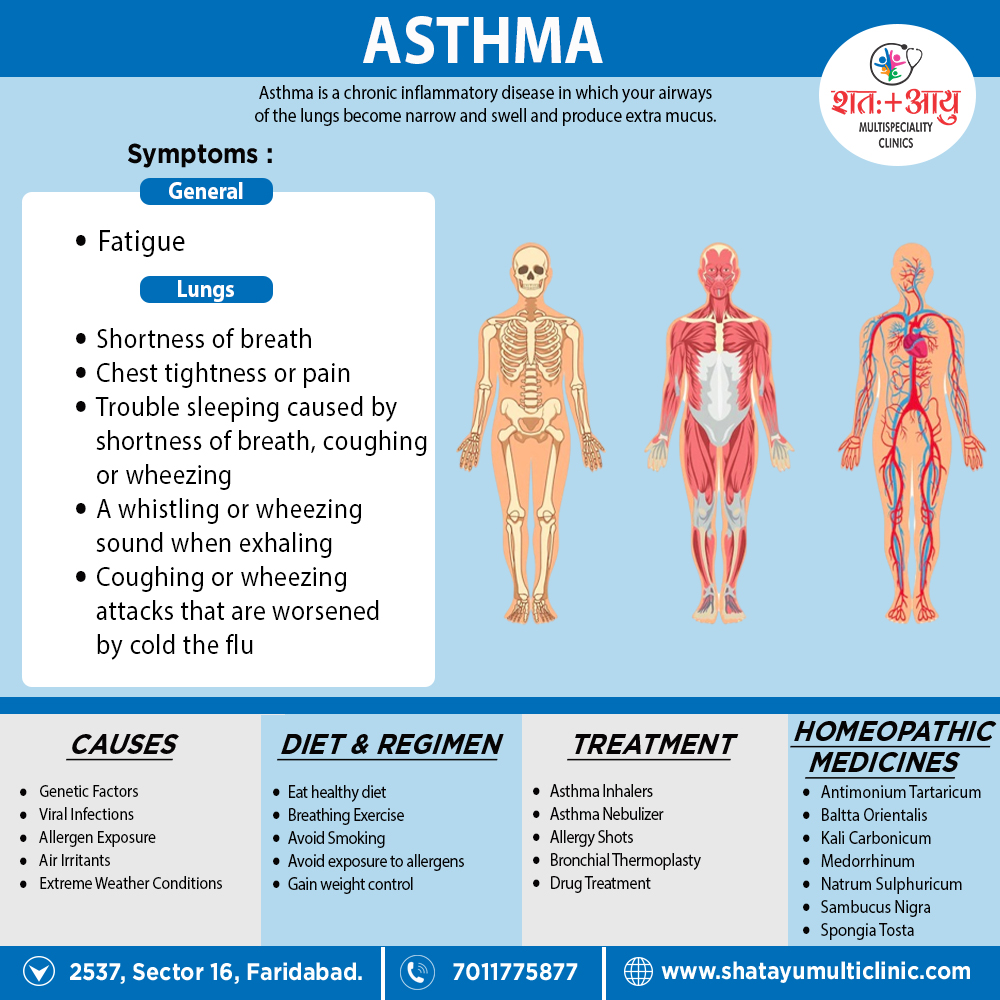Diagnosis of Asthma
Physical examination:
To rule out other possible conditions such as a respiratory infection or chronic obstructive pulmonary disease (in other words, COPD); physical examination & history of symptoms is necessary.
Tests to measure lung functions:
You may also be given lung (in other words, pulmonary) function tests to determine how much air moves in and out as you breathe.
These tests may i.e.:
Spirometry:
This test estimates the narrowing of your bronchial tubes by checking how much air you can exhale after a deep breath and how fast you can breathe out.
A spirometry test can provide an indication of lung function.
A spirometry can help assess lung function.
Spirometry is a non-invasive test that requires deep breaths and forceful exhalation into a hose.
The hose links to a machine called a spirometer that displays two key measurements:
- Forced vital capacity (FVC), or the maximum amount of air a person can both inhale and exhale.
- Forced expiratory volume (FEV-1), the maximum amount of air a person can exhale in one second.
The doctor then compares these measurements against what would be normal for another person of the same age.
In general, Measurements below normal indicate obstructed airways and probable asthma.
A doctor will often administer a bronchodilator drug to open air passages before retesting with the spirometer to confirm the diagnosis.
If results improve after using the drug, the risk of an asthma diagnosis increases.
Besides this, Children under 5 years of age are difficult to test using spirometry, so asthma diagnoses will rely mostly on symptoms, medical histories, and other parts of the physical examination process.
In younger children, doctors commonly prescribe asthma medicines for 4 to 6 weeks to gauge physical response.
Peak flow:
- A peak flow meter is a simple device that measures how hard you can breathe out.
- Lower than usual peak flow readings are a sign your lungs may not be working as well and that your asthma may be getting worse.
- Your doctor will give you instructions on how to track and deal with low peak flow readings.
Lung function tests often are done before and after taking a medication called a bronchodilator, such as albuterol, to open your airways.
If your lung function improves with use of a bronchodilator, it’s likely you have asthma.
Additional tests:
Other tests to diagnose include:
Methacholine challenge:
- Methacholine is a known trigger that, when inhaled, will cause mild constriction of your airways.
- If you react to the methacholine, you likely have asthma.
- This test may be used even if your initial lung function test is normal.
Nitric oxide test:
- This test, though not widely available, measures the amount of the gas, nitric oxide, that you have in your breath.
- When your airways are inflamed a sign you may have higher than normal nitric oxide levels.
Imaging tests:
- A chest X-ray and high-resolution computerized tomography (CT) scan of your lungs and nose cavities (sinuses) can identify any structural abnormalities or diseases (such as infection) that can cause or aggravate breathing problems.
Allergy testing:
- This can be performed by a skin test or blood test.
- Allergy tests can identify allergy to pets, dust, mold and pollen.
- If important allergy triggers are identified, this can lead to a recommendation for allergen immunotherapy.
Sputum eosinophils:
- This test looks for certain white blood cells (eosinophils) in the mixture of saliva and mucus (sputum) you discharge during coughing.
- Eosinophils are present when symptoms develop and become visible when stained with a rose-colored dye (eosin).
Provocative testing for exercise and cold-induced asthma:
- In these tests, your doctor measures your airway obstruction before and after you perform vigorous physical activity or take several breaths of cold air.
How asthma is classified ?
To classify your severity, your doctor considers your answers to questions about symptoms (such as how often you have asthma attacks and how bad they are), along with the results of your physical exam and diagnostic tests.
Determining your asthma severity helps your doctor choose the best treatment.
severity often changes over time, requiring treatment adjustments.
It is classified into four general categories:
Asthma classification
|
Signs and symptoms
|
| Mild intermittent |
This symptoms up to two days a week and up to two nights a month |
| Mild persistent |
Symptoms more than twice a week, but no more than once in a single day |
| Moderate persistent |
Symptoms once a day and more than one night a week |
| Severe persistent |
Symptoms throughout the day on most days and frequently at night |
[2]

